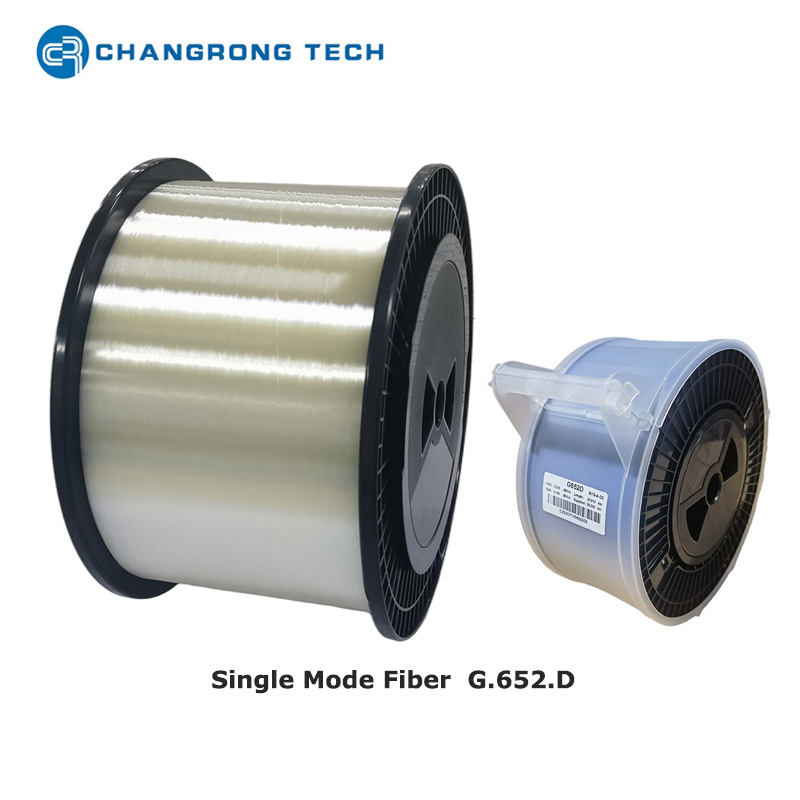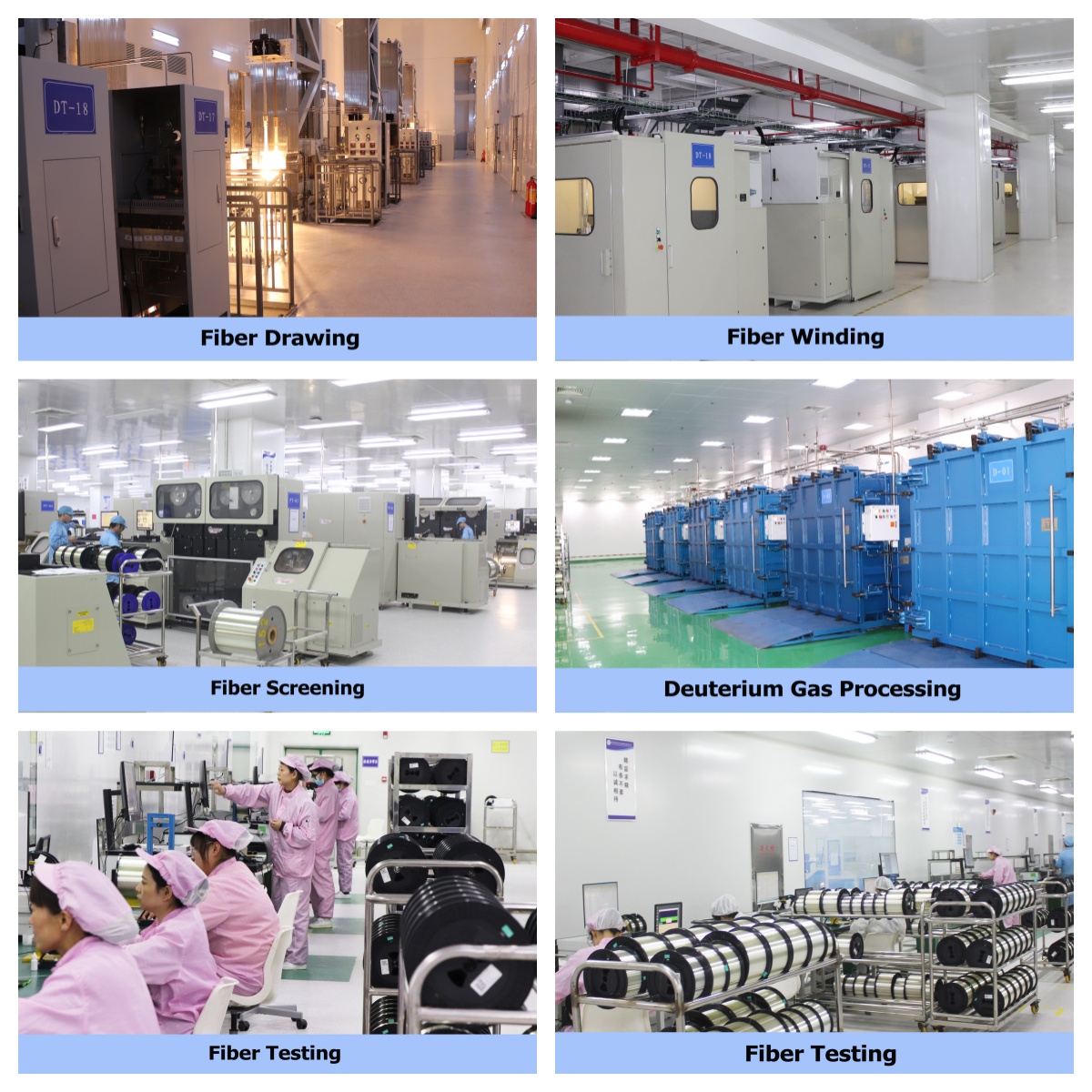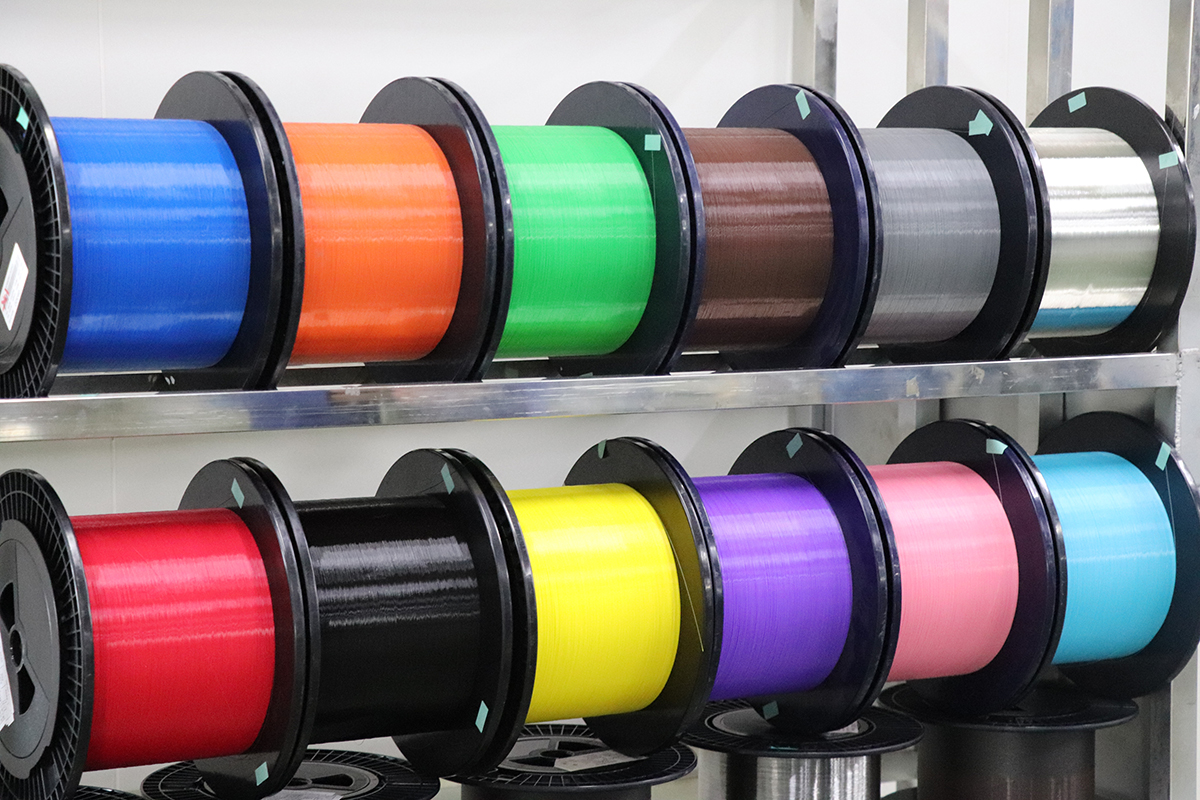G652.D Low Water Peak Non-Dispersion Shifted Single Mode Optical Fiber

Description of Single Mode Fiber G652.D:
G652D is a core specification of ITU-T Recommendation G.652 (the most widely used single-mode optical fiber standard globally). It is an optimized variant of the G652 series, designed to address transmission limitations of earlier versions (e.g., G652A/B/C) and adapt to the high-bandwidth, long-distance demands of modern optical communication networks (such as 5G backhaul, data center interconnection (DCI), and long-haul backbone networks). Below is a comprehensive breakdown of its definition, technical characteristics, performance advantages, applications, and standards.
Standard Source: Defined by the International Telecommunication Union Telecommunication Standardization Sector (ITU-T) in Recommendation G.652: Single-mode optical fibers and cables for use in telecommunication networks.
Series Classification: The G652 series includes four main variants (A/B/C/D), with G652D being the latest and most versatile version. It inherits the basic structure of G652 fibers (step-index single-mode design) while eliminating key limitations of earlier versions (e.g., narrow usable wavelength range, high water peak loss).
Core Function: As a single-mode fiber (SMF), it transmits only one transverse mode of light (the fundamental mode) at the working wavelength, minimizing modal dispersion—this is the core reason it supports long-distance (tens to hundreds of kilometers) and high-speed (10Gbps/100Gbps/400Gbps) transmission.
The physical structure and material selection of G652D determine its basic performance. Its cross-section follows a three-layer design, as shown below:
| Layer | Composition | Thickness | Function |
| Core | High-purity silica (SiO₂) doped with germanium (GeO₂) | ~9 μm | Transmits the main optical signal; germanium doping increases refractive index to confine light. |
| Cladding | Pure silica (SiO₂) | ~125 μm | Has a lower refractive index than the core, forming a "light trap" via total internal reflection. |
| Coating | UV-cured acrylate polymer | ~250 μm (typical) | Protects the fiber from mechanical damage (e.g., scratches) and moisture; provides flexibility. |
Note: The total diameter of G652D (including coating) is usually 250 μm, which is compatible with standard optical fiber connectors (e.g., SC, LC) and cabling systems.
Features:
(1) Superior to the ITU-T G.652D recommendation and IEC 60793-2-50 B1.3 specification.
(2) Designed for operation over 1260nm to 1625nm wavelength spectrum.
(3) Outstanding optical performance supporting high-speed transmission requirement of DWDM and CWDM.
(4) Excellent PMD performance, supporting high-speed and long repeater spacing transmission system.
(5) Compatible with existing 1310nm equipment.
Typical Application Scenarios:
Fronthaul/Backhaul: Transmits 5G base station signals (e.g., CPRI protocol) between base stations and core networks. The O-band (1260–1360 nm) is used for short-distance fronthaul (≤10km), while the C-band (1530–1565 nm) supports 100Gbps+ backhaul (50–100km).
Connects geographically distributed data centers (e.g., between two data centers 50–200km apart). Supports 400Gbps/800Gbps DWDM systems via C/L-bands, meeting the demand for large-scale data replication and low-latency transmission.
Metro Networks: Carries multi-service traffic (e.g., video, voice, data) in cities. The wide wavelength window allows flexible allocation of wavelengths for different services.
Long-Haul Networks: Combined with erbium-doped fiber amplifiers (EDFAs) and dispersion compensation, G652D supports 100Gbps+ transmission over 800–1000km (e.g., inter-provincial or inter-city backbone links).
Used in FTTB (Fiber-to-the-Building) and FTTH (Fiber-to-the-Home) systems. Its low loss ensures that signals can reach end-users without amplification (typical FTTx distances are ≤20km).
Changrong's Fiber Workshop View:
9 Fiber Drawing Towers ( 2 lines/Tower, totally 18 Production Lines)
Annual Output 15,000,000 kilometers
Full Sets of Cutting-edge Testing Equipment

Colored Fiber:

Fiber Stock:

G.652.D Fiber Color Identification (for colored fibers)
No. | 1 | 2 | 3 | 4 | 5 | 6 | 7 | 8 | 9 | 10 | 11 | 12 |
Color | Blue | Orange | Green | Brown | Slate | White | Red | Black | Yellow | Violet | Pink | Aqua |

G.652.D Bare Fiber Technical Parameters
Geometrical Performance | ||
Characteristics | Unit | Standard Value |
Cladding Diameter | μm | 125.0±0.7 |
Cladding Non-circularity | % | ≤1.0 |
Core-Cladding Concentricity Error | μm | ≤0.6 |
Coating Diameter | μm | 243±5.0 |
Coating Non-circularity | % | ≤6.0 |
Coating-Cladding Concentricity Error | μm | ≤12 |
Curl Radius | m | ≥4 |
Optical Performance | |||
Characteristics | Conditions | Unit | Standard Value |
Attenuation | 1310nm | dB/km | ≤0.344 |
1383nm | dB/km | ≤value at 1310nm | |
1550nm | dB/km | ≤0.204 | |
1625nm | dB/km | ≤0.244 | |
Attenuation vs Wavelength Max Difference | 1285nm ~ 1330nm vs 1310nm | dB/km | ≤0.04 |
1485nm ~1580nm vs 1550nm | dB/km | ≤0.03 | |
Dispersion Coefficient | 1285nm~1340nm | ps/(nm/km) | ≥-3.5 ≤3.5 |
1271nm~1360nm | ps/(nm/km) | ≥-5.3 ≤5.3 | |
1550nm | ps/(nm/km) | 13.3-18.0 | |
1625nm | ps/(nm/km) | 17.2-23.0 | |
Zero Dispersion Wavelength λ0 | -- | nm | 1300-1324 |
Zero Dispersion Slope S0 | -- | ps/(nm²/km) | 0.073-0.092 |
Typical Value | -- | ps/(nm²/km) | ≤0.086 |
PMD | Maximum Individual Fiber | ps/√km | ≤0.06 |
Link (M=20, Q=0.01%) | ps/√km | ≤0.06 | |
Typical Value | ps/√km | ≤0.04 | |
Fiber Cut-off Wavelength λcc | -- | nm | 1180-1330 |
Cable Cut-off Wavelength λcc | -- | nm | ≤1260 |
MFD | 1310nm | μm | 9.2±0.4 |
1550nm | μm | 10.4±0.5 | |
Effective Group Index of Refraction | 1310nm | 1.4672 | |
1550nm | 1.4683 | ||
Point Discontinuity | 1310nm | dB | ≤0.05 |
1550nm | dB | ≤0.05 | |
Mechanical Performance | |||
Characteristics | Conditions | Unit | Standard Value |
Proof Test | -- | % | ≥1.0 |
-- | N | ≥8.8 | |
-- | Gpa | ≥0.69 | |
Coating Strip Force | Peak Force | N | 1.0-8.9 |
Average Value | N | 1.0-5.0 | |
Tensile Strength (Weibull Probability Level) | Before -aged(sample 0.5m)(Level 15%) | Gpa | ≥3.14 |
Before -aged(sample 0.5m)(Level 50%) | ≥3.80 | ||
After -aged(sample 0.5m)(Level 15%) | ≥2.76 | ||
After -aged(sample 0.5m)(Level 50%) | ≥3.03 | ||
Dynamic Fatigue Nd | -- | ≥20 | |
Macro-bending Loss | (100 turns; Ф 60 mm) @1625 nm | dB | ≤0.05 |
Environmental Performance | |||
Characteristics | Conditions | Unit | Standard Value |
Temperature Cycling | -60℃ ~+85℃ | dB/km | ≤0.05 |
Temperature Humidity Cycling | 85℃、 RH 85%、 30 Days | dB/km | ≤0.05 |
Water Immersion | 23℃、 30 Days | dB/km | ≤0.05 |
Dry Heat Aging | 85℃、 30 Days | dB/km | ≤0.05 |
Reel Length:
Normally standard 24.4km, 48.8km, 50.4km per reel
Package:
5 or 6 reels per carton box packed on pallets.
Shipping Pictures:

content is empty!